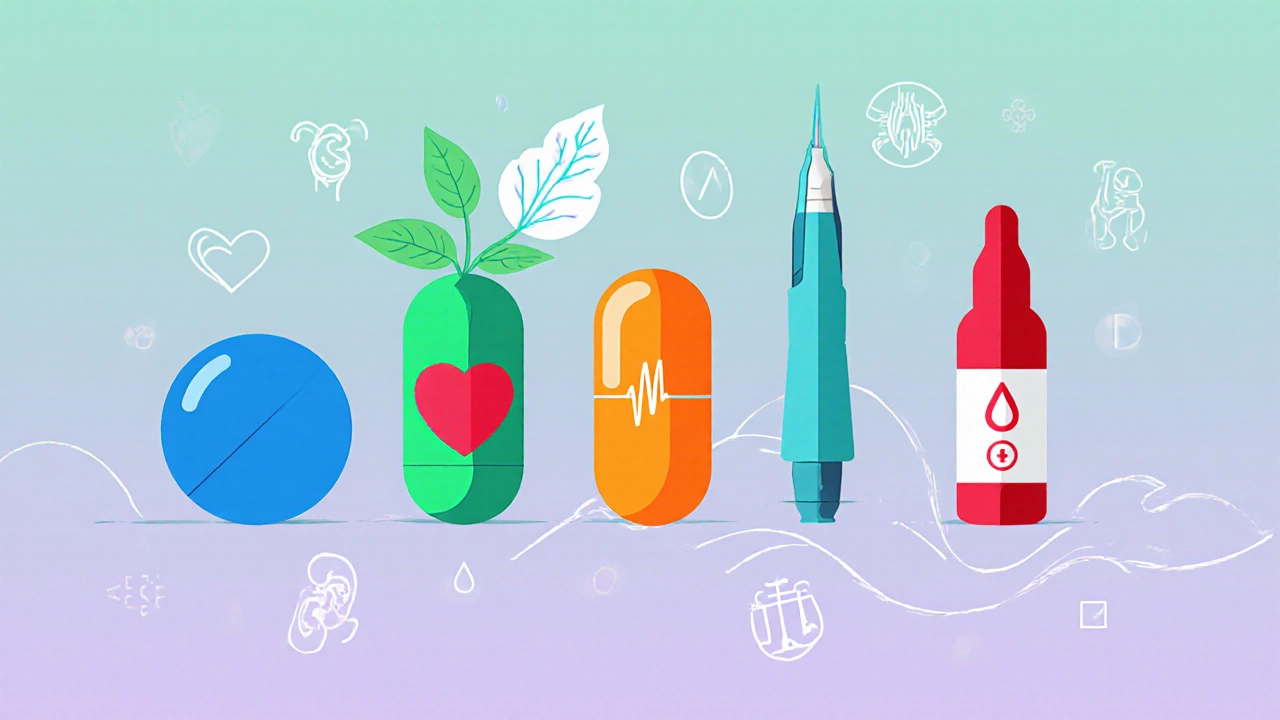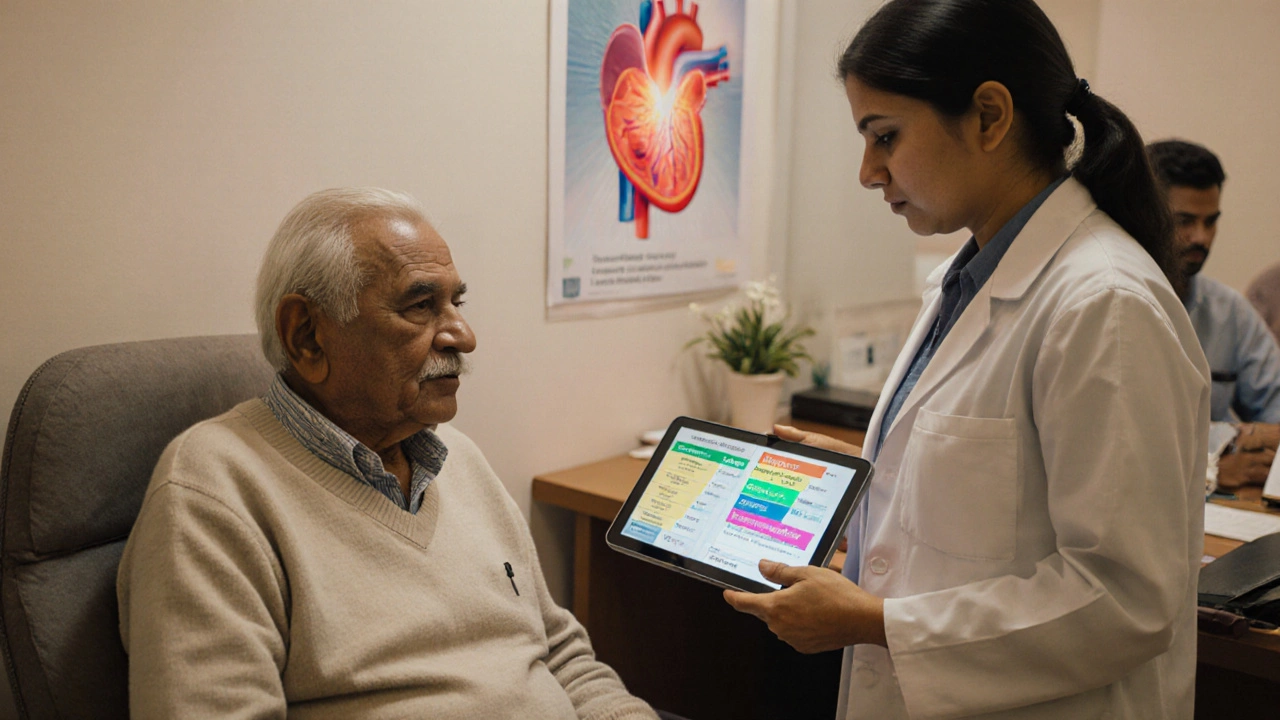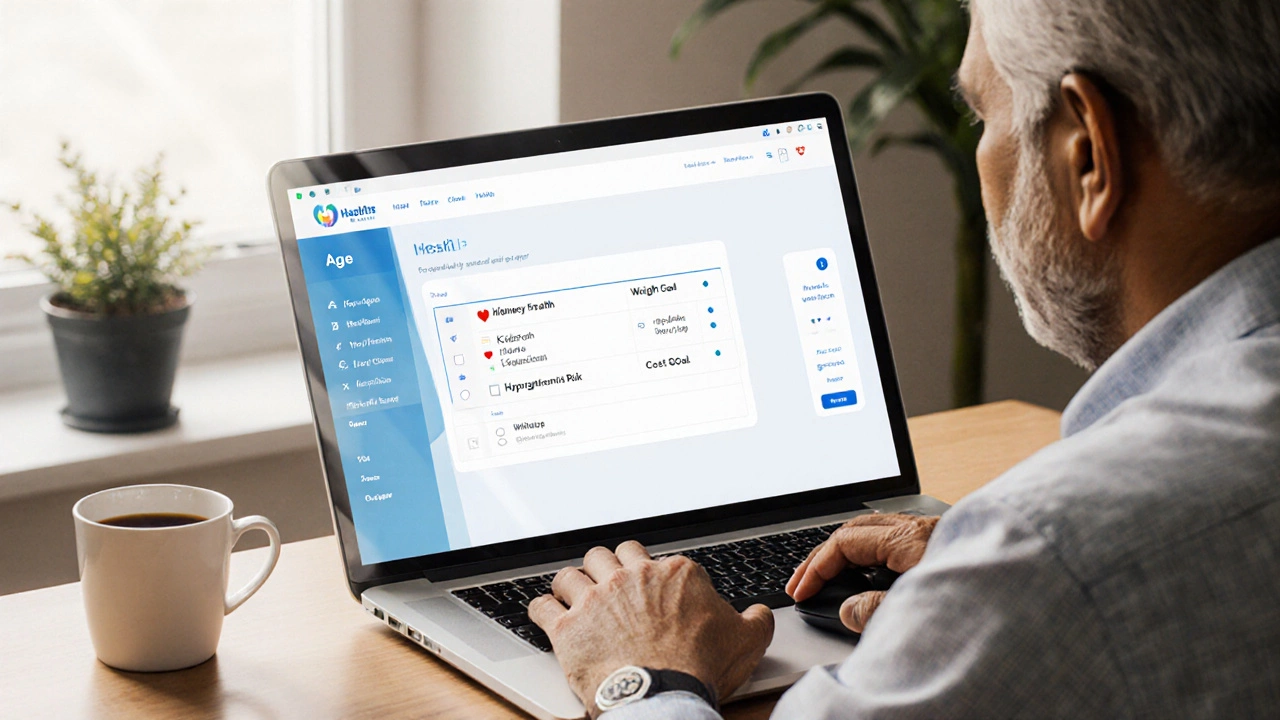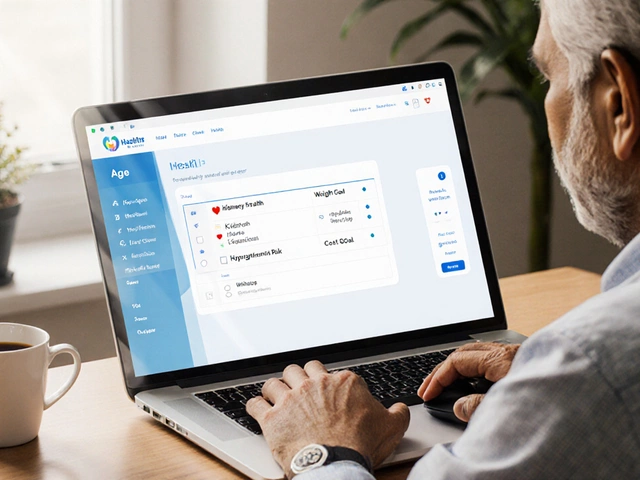Diabetes Medication Safety Selector
Your Health Profile
Recommended Medication
Complete your profile to get personalized recommendations
Why This Recommendation?
Your personalized explanation will appear here once you complete your profile.
When doctors talk about the safest diabetic medication is a drug that minimizes serious side effects while controlling blood sugar, they’re focusing on more than just glucose numbers. Safety means a low chance of hypoglycemia, no harmful impact on the heart or kidneys, and tolerable weight changes. In 2025, big trials have reshaped the safety landscape, so patients can pick a medicine that fits their health profile, not just their A1C target.
Key Takeaways
- Metformin remains the first‑line choice for most adults because of its proven safety and cardiovascular benefit.
- SGLT2 inhibitors (e.g., empagliflozin) and GLP‑1 receptor agonists (e.g., liraglutide) are safest for people with heart or kidney disease.
- Sulfonylureas and high‑dose insulin carry the highest hypoglycemia risk and should be used cautiously.
- Safety decisions depend on age, kidney function, heart health, weight goals, and personal preferences.
- Regular monitoring and open dialogue with your healthcare provider are essential for staying safe.
How We Measure Drug Safety
Safety isn’t a single number; clinicians evaluate several domains:
- Hypoglycemia risk - how often the drug can drop blood sugar below 70 mg/dL.
- Cardiovascular outcomes - does the medication lower heart‑attack or stroke rates?
- Renal impact - is the drug safe for people with reduced eGFR?
- Weight effect - does it cause unwanted gain or help with loss?
- Adverse‑event profile - gastrointestinal upset, genital infections, or rare but serious side effects.
Large, randomized trials and real‑world registries published between 2020‑2024 provide the data we rely on today.
Major Diabetes Medication Classes and Their Safety Profiles
Below is a quick look at the most common drug families, each introduced with Schema.org markup for easy knowledge‑graph extraction.
Metformin is a biguanide that lowers glucose production in the liver and improves insulin sensitivity. It has been used for over six decades, showing a very low hypoglycemia risk, modest weight loss, and a proven reduction in cardiovascular events. The main concern is gastrointestinal discomfort, which can be minimized with a slow‑release formula.
SGLT2 inhibitors (e.g., empagliflozin, dapagliflozin) block kidney reabsorption of glucose, causing it to be flushed in urine. They boast significant heart‑failure and kidney protection, modest weight loss, and a low hypoglycemia risk when used without insulin. Caution: increased risk of genital yeast infections and, in rare cases, diabetic ketoacidosis.
GLP‑1 receptor agonists (e.g., liraglutide, semaglutide) mimic the gut hormone GLP‑1, enhancing insulin secretion, suppressing appetite, and slowing gastric emptying. They provide excellent weight loss, strong cardiovascular benefit, and minimal hypoglycemia unless combined with sulfonylureas or insulin. Common side effects include nausea, which often fades after a few weeks.
DPP‑4 inhibitors (e.g., sitagliptin, linagliptin) increase endogenous GLP‑1 levels. Their safety record is solid: very low hypoglycemia risk and neutral weight effect. They lack the robust heart‑failure benefit seen with SGLT2 inhibitors, but they’re a good alternative for patients who can’t tolerate GI upset.
Insulin (especially long‑acting basal insulin) is the most potent glucose‑lowering therapy. While it’s indispensable for type 1 diabetes and advanced type 2, it carries the highest hypoglycemia risk and can cause weight gain. Modern analogs (e.g., glargine U‑100, degludec) have flatter action curves, reducing night‑time lows.
Sulfonylureas (e.g., glipizide, gliclazide) stimulate insulin release from the pancreas. They are inexpensive but come with a notable hypoglycemia risk, especially in the elderly or those with renal impairment. Weight gain is another downside.

Safety Comparison Table
| Drug Class | Hypoglycemia Risk | Cardiovascular Benefit | Renal Safety | Weight Effect | Typical Side Effects |
|---|---|---|---|---|---|
| Metformin | Very Low | Modest reduction in MACE | Safe down to eGFR 30mL/min | Neutral to mild loss | GI upset, B12 deficiency |
| SGLT2 inhibitors | Low (if not on insulin) | Strong HF & CKD benefit | Beneficial; ↓ eGFR decline | Modest loss | Genital infections, ketoacidosis (rare) |
| GLP‑1 receptor agonists | Low | Significant ASCVD reduction | Renal‑neutral; safe >eGFR 15 | Marked loss | Nausea, vomiting, pancreatitis (rare) |
| DPP‑4 inhibitors | Very Low | Neutral | Renal‑safe; dose‑adjusted | Neutral | Headache, nasopharyngitis |
| Basal Insulin | High (dose‑dependent) | Neutral | Safe; monitor for fluid overload | Weight gain | Hypoglycemia, lipohypertrophy |
| Sulfonylureas | Medium‑High | Neutral | Caution below eGFR 30 | Weight gain | Hypoglycemia, rash |
Choosing the Right Medication for You
Safety is personal. Here’s a quick decision framework you can run through with your doctor:
- Do you have heart failure or chronic kidney disease? If yes, SGLT2 inhibitors or GLP‑1 agonists usually top the list.
- Is low hypoglycemia a priority? Metformin, DPP‑4 inhibitors, and GLP‑1 agonists score best.
- Are you aiming to lose weight? GLP‑1 agonists and SGLT2 inhibitors provide modest to significant loss.
- Do you have cost constraints? Metformin and generic sulfonylureas are cheapest, but weigh the hypoglycemia risk.
- Any gastrointestinal sensitivities? If yes, stick with metformin XR or DPP‑4 inhibitors.
For older adults (≥70years) or those with fluctuating meals, prioritize drugs with a very low hypoglycemia profile-Metformin, DPP‑4 inhibitors, or low‑dose GLP‑1 once‑weekly injections.
Practical Tips to Maximize Safety
- Start low, go slow: Begin with the smallest effective dose, especially for metformin and GLP‑1 agents.
- Check kidney function: eGFR < 30mL/min/1.73m² contraindicates metformin and many SGLT2 inhibitors.
- Watch for warning signs: Sudden dizziness, sweating, or confusion could be hypoglycemia; call your doctor immediately.
- Stay vaccinated: People on SGLT2 inhibitors have higher urinary tract infection risk; flu and COVID‑19 shots can reduce complications.
- Keep a medication list: Include over‑the‑counter supplements; some herbs (e.g., ginseng) can raise blood sugar.
Frequently Asked Questions
Which diabetes drug has the lowest risk of causing low blood sugar?
Metformin, DPP‑4 inhibitors, SGLT2 inhibitors (when not combined with insulin) and GLP‑1 receptor agonists all have a very low hypoglycemia risk. Sulfonylureas and insulin are the main culprits for frequent lows.
Can I use metformin if I have mild kidney disease?
Yes. Current guidelines allow metformin down to an eGFR of 30mL/min/1.73m², but the dose should be reduced and kidney function monitored every 3‑6months.
Do SGLT2 inhibitors cause dangerous weight loss?
Weight loss with SGLT2 inhibitors is modest (about 2‑3kg on average) and usually considered a benefit rather than a risk. They do not cause rapid or unhealthy loss.
Is a GLP‑1 injection safe for people over 80?
Studies up to 2024 show GLP‑1 agonists are well‑tolerated in seniors, with low hypoglycemia risk. Start at the lowest dose and monitor for nausea. Always discuss kidney function, as some agents need adjustment.
What should I do if I develop a yeast infection while on an SGLT2 inhibitor?
Good hygiene, breathable underwear, and prompt antifungal treatment usually clear the infection. If infections recur, talk to your doctor about switching to another class.

Next Steps
1. Schedule a medication review with your healthcare provider and bring this guide.
2. Ask for baseline labs - especially kidney function (eGFR) and B12 level if you’re on metformin.
3. Decide together which safety criteria matter most to you (heart, kidneys, weight, cost).
4. Start the chosen drug at the lowest dose and track blood glucose trends for at least two weeks.
5. Report any side effects immediately; adjustment is often simple but critical for long‑term safety.
Choosing the safest diabetic medication isn’t about a one‑size‑fits‑all pill; it’s a partnership between you, your doctor, and the data that keep you healthy. Stay informed, stay proactive, and you’ll keep your blood sugar under control without compromising safety.







